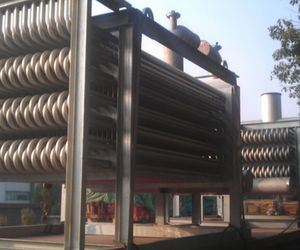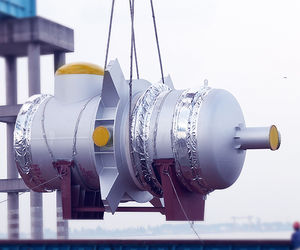
- Building - Construction
- Industrial Building Equipment
- Air cooler
- SHUANGLIANG ECO-ENERGY SYSTEMS CO., LTD
Air cooler low-pressure
Add to favorites
Compare this product
Characteristics
- Material
- air
- Other characteristics
- low-pressure
Description
The intercooler can only be seen in the vehicle with turbo charging. Because the intercooler is actually a matching part of turbocharging, its function is to improve the air exchange efficiency of the engine. One of the reasons why turbocharged engine has more power than ordinary engine is that its air exchange efficiency is higher than normal engine’s natural intake. When the air enters the turbocharger, its temperature will increase and its density will decrease correspondingly. The intercooler plays the role of cooling the air. The high temperature air will be cooled by the intercooler and then enter the engine. If there is no intercooler and the pressurized high temperature air directly enters into the engine, the engine will be damaged or even dead due to the high air temperature. For supercharged engine, intercooler is an important component of supercharging system
During multistage compression, the cooling of refrigerant gas between high and low pressure stages is called intermediate cooling. The former is used to cool the exhaust gas of low-pressure stage to the dry saturated steam state under the intermediate pressure. This method is often used in the two-stage compression of ammonia. The latter is used to mix the exhaust gas of low-pressure stage with the steam evaporated in the intercooler to reduce the temperature, but it does not reach the dry saturated steam state under the intermediate pressure. It is commonly used in the two-stage compression of R12 and R22.
Catalogs
No catalogs are available for this product.
See all of SHUANGLIANG ECO-ENERGY SYSTEMS CO., LTD‘s catalogsOther SHUANGLIANG ECO-ENERGY SYSTEMS CO., LTD products
HEAT EXCHANGER
Related Searches
- Chiller
- Liquid chiller
- Water chiller
- Air chiller
- Industrial chiller
- Air-cooled recirculation chiller
- Pressure chiller
- Chiller-heater
- Liquid chiller-heater
- Geothermal heat pump
- Energy saving heat pump
- Water chiller-heater
- Industrial chiller-heater
- Low-pressure chiller
- Hot water heat pump
- Air chiller-heater
- Absorption chiller
*Prices are pre-tax. They exclude delivery charges and customs duties and do not include additional charges for installation or activation options. Prices are indicative only and may vary by country, with changes to the cost of raw materials and exchange rates.






